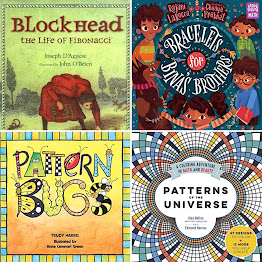Five Thoughts on Making Class MORE Enjoyable!
Be Yourself!
I trained to be a teacher in the "dark ages" and the number one piece of advice I was given was not to smile before Thanksgiving. Such discouraging counsel! Obviously you aren't going to be students' friends like their peers are. But you can be friendly! And you can smile! Share a bit of your personality and personal life especially in those first weeks as you are getting to know your students. Relax. Make it conspicuous that you love to learn, love math, and love teaching!
Music can make it better!
I love
Matt Vaudrey's post on using music to make class better! Music cues can direct student action and eliminate some of the need of the teacher's constant instruction!
Use music during independent work; allow students to listen to and/or share their own music (school appropriate lyrics only).
Music lightens the spirit and reduces anxiety!
Use HUMOR!
I can't resist sharing the
math jokes from Math=Love posting this week! Invite your students to find or create math jokes to add to this ready-made stash! Include a joke on tests or in weekly emails to parents.
Check out this
American Psychological Association article on how laughing can lead to learning!
Take Learning Outside!
It's hot as blazes here and no one would want to go outside for a learning activity! BUT in a few weeks the weather is going to be glorious! It will be the perfect time for sidewalk chalk and math on the move!
Math Trails take time to develop ... maybe that's a project for students or a long-range goal for your teaching team.
Practice Self-Care ... and spread joy among your colleagues!
The beginning of the school year is taxing at best. It's easy to get caught up in decorating, prepping, meeting, and grading ... and forgetting to set aside time for yourself! Look at your planning and home calendar. Take some time now to mark out an hour here or there just for YOU! Whether it be a dinner date with a dear friend or a bubble bath in quiet ... taking time for yourself is essential!
Beyond that time for yourself, remember ... don't isolate, instead collaborate! Join the
#ITeachMath or
#MTBoS community on Twitter! You'll be glad you did :)
Also think about spreading joy among your colleagues! Share a smile, a positive thought from a recent encounter with students, or kudos for all your teammates are doing!
















